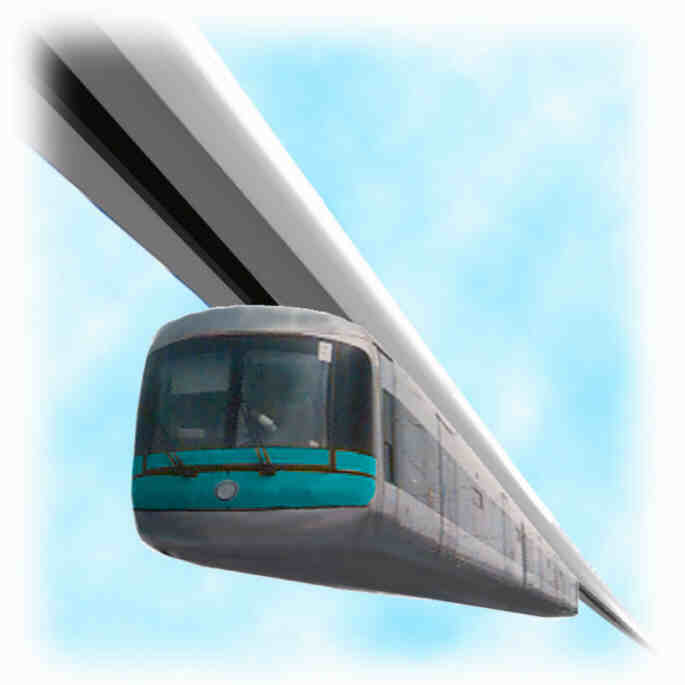By Bill Wendt
There is a promising, largely untried monorail technology that has been inexcusably neglected by transit planners and the general public both. An adaptation of well proven freight hanling equipment, its structure is a simple, standard steel beem, 14" x 24", held aloft by heavy-duty light poles. Thus it blocks very little light and would cost little more than trolley wire, or one-tenth as much as conventional elevated structure. The vehicle is simply a modified bus body, costing about as much as a bus of similar capacity, about one-half or one-third as much as current rapid transit cars. It is both propelled and about 95% suspended by a linear induction motor, a variant of the common clock motor. These linear motors generate magnetic force in the direction of travel to directly propel the vehicle with no mechanical device in between, regardless of weather. Having no moving, mechanical parts, it is just as silent as a clock motor. Such motors are commonly used in industry to move metals, from powders to ingots, with intervening machinery.
This technology should be environmentally acceptable even in Grant Park, while affording spectacular views of both lake and downtown. Still it could get up to 50 mph between stops a half-mile apart, say, between the Art Institute and the Field Museum. This would be the ideal way to connect McCormick Place with the museums, Navy Pier, near north hotels. It would take 10 minutes between near north hotels and McCormick Place instead of 25 at least for buses. It would also allow a quick connection to the O'Hare rapid transit.

Monorail Technology for the CTA